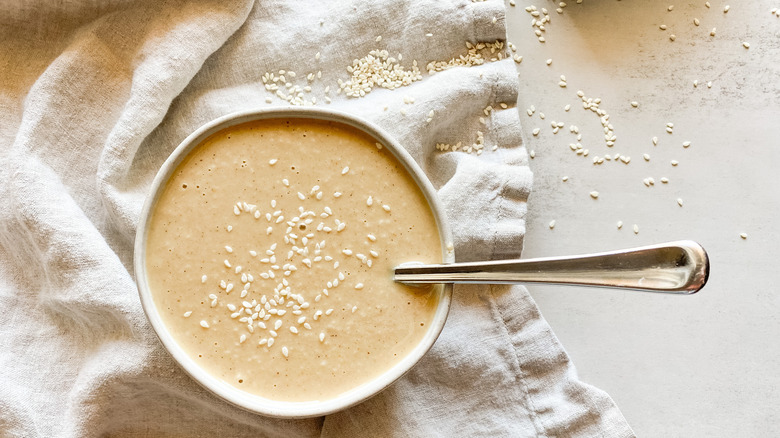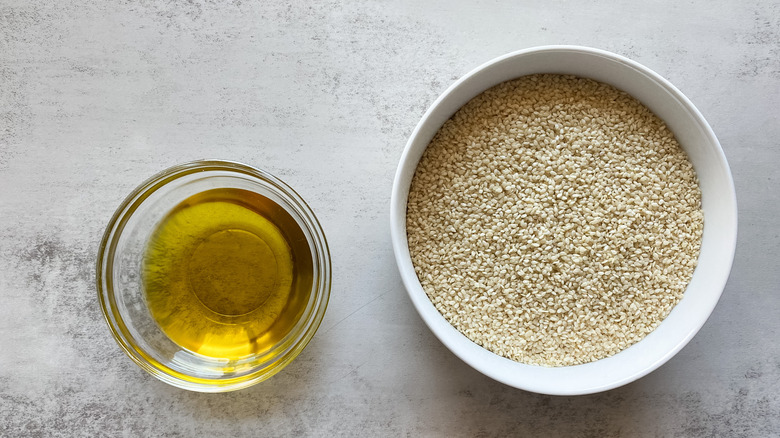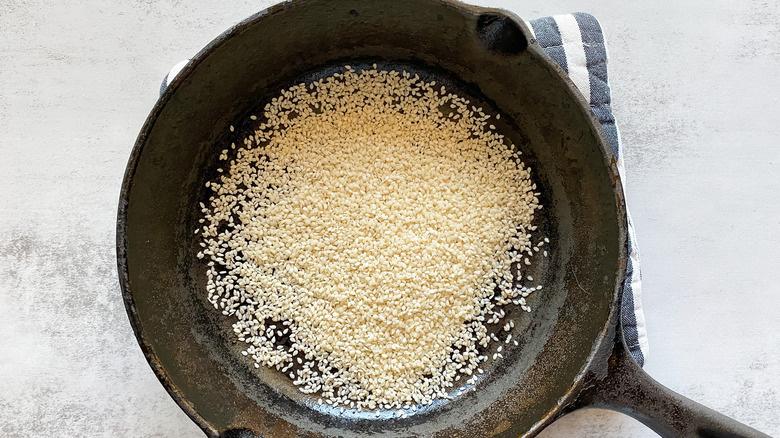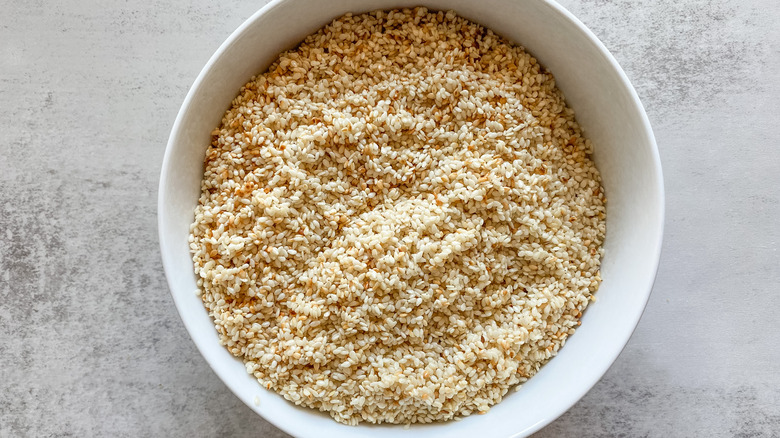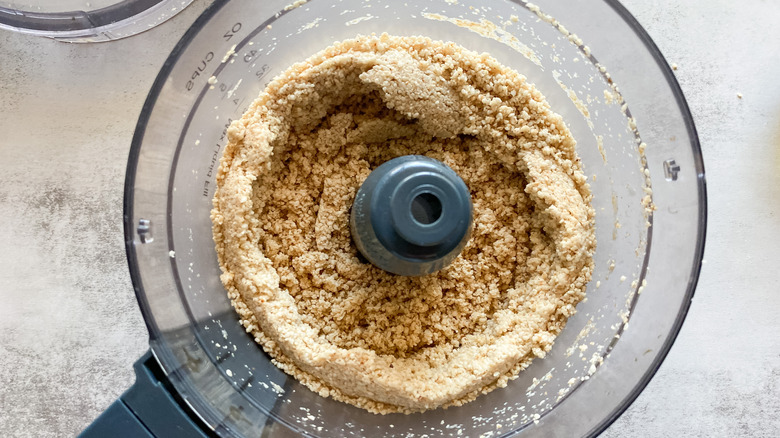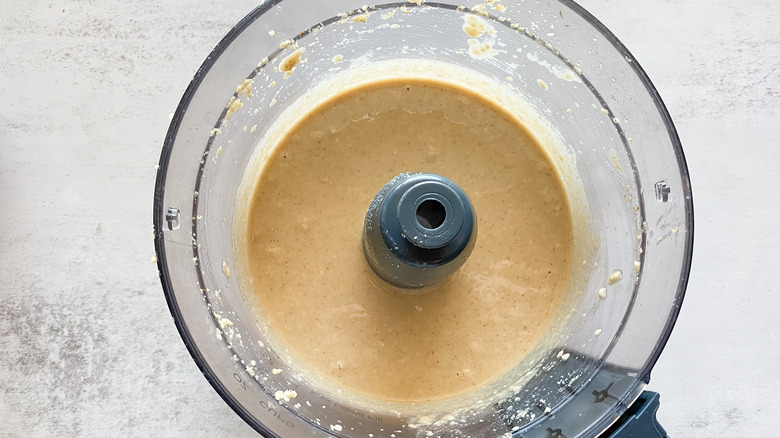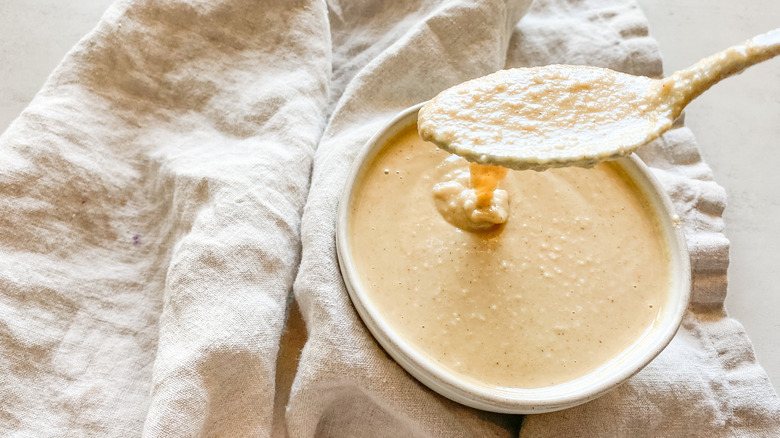Easy Homemade Tahini Paste Recipe
Earthy and rich, yet creamy and subtle, tahini is a glorious paste to have around. The word tahini comes from the root word "to grind," a hint at the process necessary to create this delicious paste. The paste was traditionally ground by hand, but thankfully, Kristen Carli –- recipe developer, registered dietitian, and owner at Camelback Nutrition & Wellness – has put together an easy tahini paste recipe, which leaves the hard work to a food processor.
Tahini can be added to meals right before serving, by drizzling some over a dish to add nutty savory aromas. It can also be incorporated into baked goods, used to make dressings and dips, or simply spread on toast. It is such a versatile paste, since it can be lightly seasoned to be sweet, spicy, or salty.
You might have never used tahini before by itself, but if you've ever enjoyed hummus, then you've tasted tahini. Store-bought tahini often lacks freshness, so by toasting the seeds yourself and immediately grinding them you can be sure only the necessary ingredients are included and your paste will taste as fresh as possible. Also, you can adapt the viscosity if you'd rather have a thicker or thinner paste by adding more liquid.
Gather your tahini ingredients
You'll be pleased to know that you only need two ingredients for the recipe.
Sesame seeds are essential to tahini because they are the core flavor, texture, and basis for the entire paste. Carli notes, "I'd recommend hulled sesame seeds if you can find them," although un-hulled will work in a pinch. Un-hulled sesame seeds will have a slightly bitter taste, and Carli comments that they "will take a bit longer in the food processor to blend."
While you might find pre-toasted sesame seeds, Carli recommends toasting them yourself. It won't take very long to grind the seeds, and it will increase the nutty aromas and make it easier for the oils to be released. For a similar, yet more intense flavor profile, she imagines black sesame seeds would also work well.
Speaking of oil, you'll need some olive oil to help the seeds blend in the food processor. Olive oil is ideal because of its earthy nutty flavor, but if you want to try an alternative, Carli recommends grapeseed oil for its neutral taste. You'll also need a food processor or very high-powered blender (or else plenty of patience with a mortar and pestle).
Toast the sesame seeds in a pan
To allow the aromatic oils to release more easily from the sesame seeds, it is ideal to toast them first. This also brings out the nuttiness in the seeds, giving plenty of flavor to the final paste.
Using a skillet or cast iron pan, toast the sesame seeds over medium heat. It is best to do this in batches so that the layer of seeds on the pan is thin, resulting in evenly toasted seeds. As they are toasting in the pan, be sure to give them a regular stir to ensure none of them start to burn on one side. Since sesame seeds are tiny, it won't take long for them to toast, and they should be done within a few minutes.
Transfer the seeds to a bowl
As the sesame seeds toast in batches, transfer them to a bowl until they are all ready. The good thing about toasting the seeds in batches is you can discard some if you accidentally burn a batch, without ruining all of your sesame seeds!
You don't have to make a point of letting your toasted seeds cool before grinding, as a bit of warmth helps the oils release from the seeds as they are processed.
Pour the sesame seeds into a food processor and mix
When all of the seeds have been evenly toasted, they are ready to be ground in the food processor. Pour the sesame seeds into your processor and mix the seeds without adding any oil for five minutes.
Depending on how new and powerful your food processor is, you might want to use the pulse function or pause during mixing. If you smell burning, it's definitely time to take a quick break. This can happen if the blade is a bit dull, requiring the motor to work harder. You might also find that the sesame seeds form a clump and can no longer be mixed. If this happens, stop the food processor, pop the lid off, and poke the contents with a utensil to redistribute them evenly.
Add the olive oil and process until smooth
After five or so minutes, the sesame seeds will probably still be grainy and won't have yet combined into a smooth paste. At this point, remove the lid of the food processor and add two tablespoons of olive oil. If you prefer a drippy tahini, you could add a little bit more, but it's a good idea to properly blend the seeds first before adding more oil.
As the sesame seeds grind in the food processor, they will continue releasing their own oils. Continue processing the paste until it is smooth. Again, pause if you start to smell any burnt aromas — you don't want this to be the last batch of tahini you make!
Depending on your food processor, it might take up to 15 minutes for the seeds to blend into a smooth paste. Just be patient. The best has yet to come.
Serve your delicious tahini paste
When your paste is completely smooth, transfer it to a bowl or sealable container. If you want to take it a step further, you can add some spices for a variety of flavor profiles. "I would love to try this with cumin or even cinnamon," notes Carli, and we're keen to follow suit.
For a spicy touch you could even try cayenne, or try za'atar for a natural pairing. Tahini makes a delicious topping for sweeter dishes when mixed with maple syrup or honey. Try using it to make cookies as a swap for the usual peanut butter cookies.
Tahini is a standard component in hummus or baba ghanoush, two Middle Eastern dips made with chickpeas and eggplants, respectively. As well, it adds tons of flavor and a creamy texture to dressings. "I love tahini in homemade salad dressings or drizzled over a roasted vegetable bowl," adds Carli.
Since there are lots of oils in tahini, if you don't plan to use it all immediately, it is best to refrigerate it to prevent them from going rancid. Store it in an airtight container in the fridge for up to seven days. Remove it from the refrigerator about 20 minutes prior to use to allow it to soften.
Easy Homemade Tahini Paste
Store-bought tahini often lacks freshness, so by toasting and grinding the seeds yourself, this easy homemade tahini paste will taste as fresh as possible.
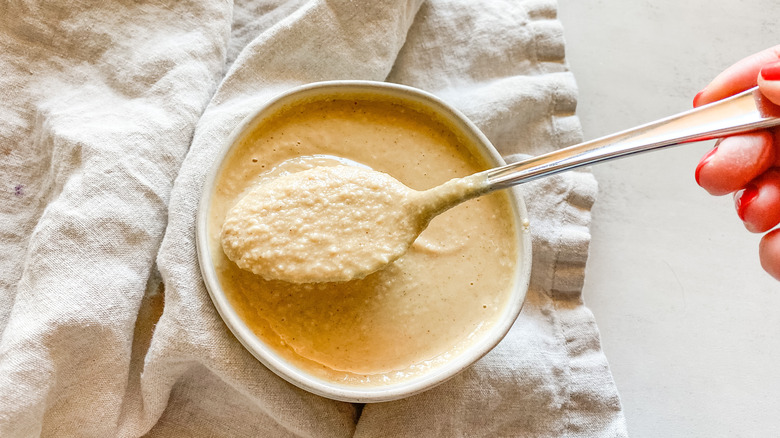
Ingredients
- 2 ½ cups sesame seeds
- 2 tablespoons olive oil
Directions
- Heat a skillet over medium heat and add the sesame seeds. (Ideally, add them in batches to avoid overcrowding the pan.)
- Allow them to toast for a few minutes, being careful to stir them to avoid burning.
- Pour the toasted sesame seeds into a food processor and process them for about 5 minutes.
- Add the olive oil to the food processor and continue to process until smooth. Be patient as this step may take 10 to 15 minutes for the ideal consistency.
Nutrition
| Calories per Serving | 288 |
| Total Fat | 25.7 g |
| Saturated Fat | 3.6 g |
| Trans Fat | 0.0 |
| Cholesterol | 0.0 mg |
| Total Carbohydrates | 10.6 g |
| Dietary Fiber | 5.3 g |
| Total Sugars | 0.1 g |
| Sodium | 5.0 mg |
| Protein | 8.0 g |
